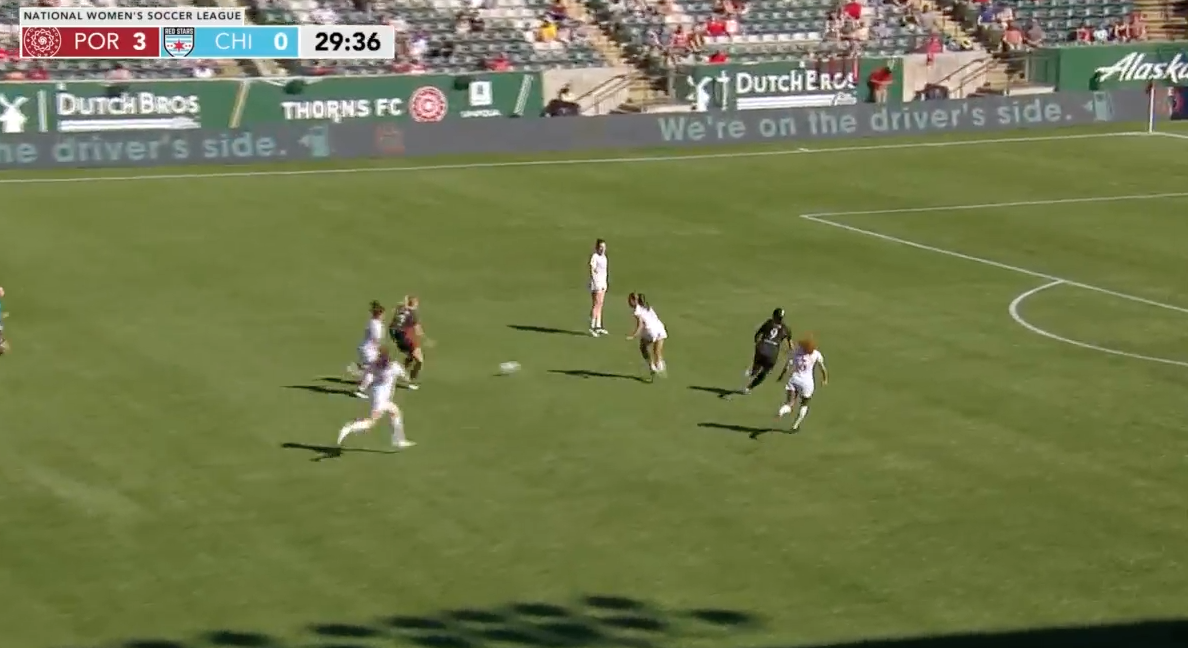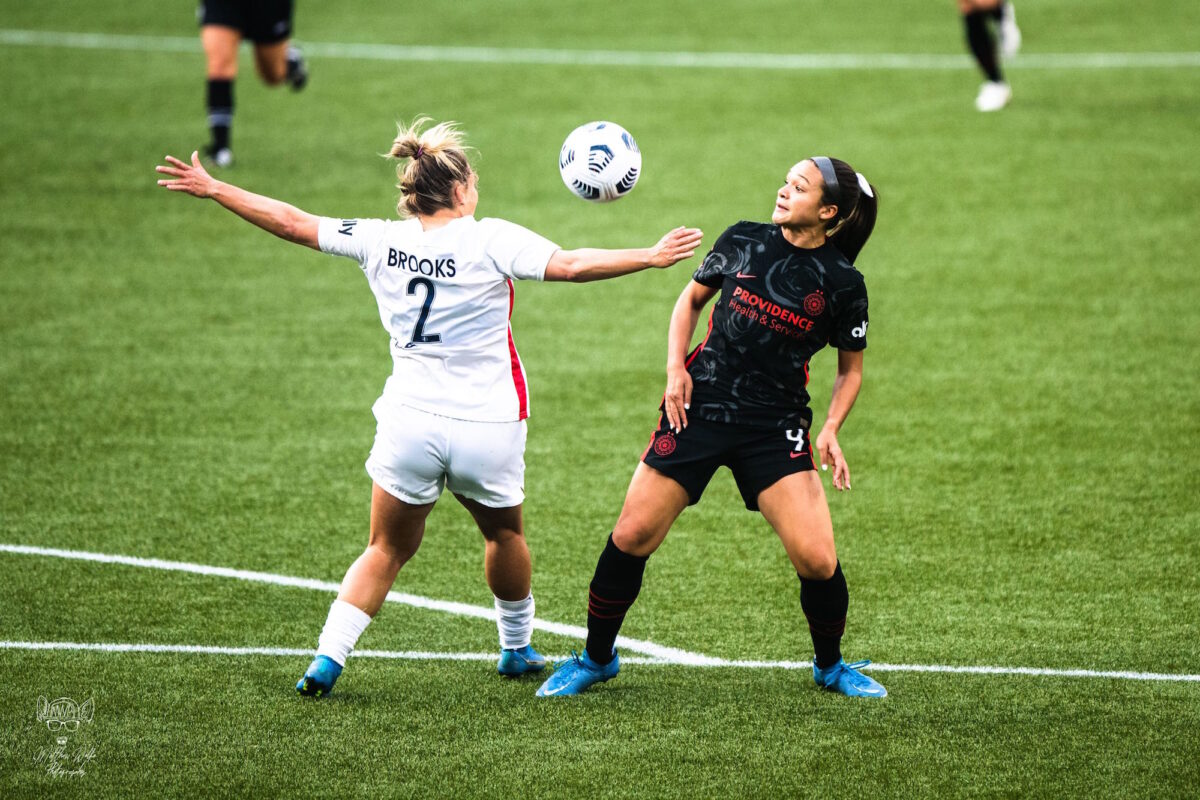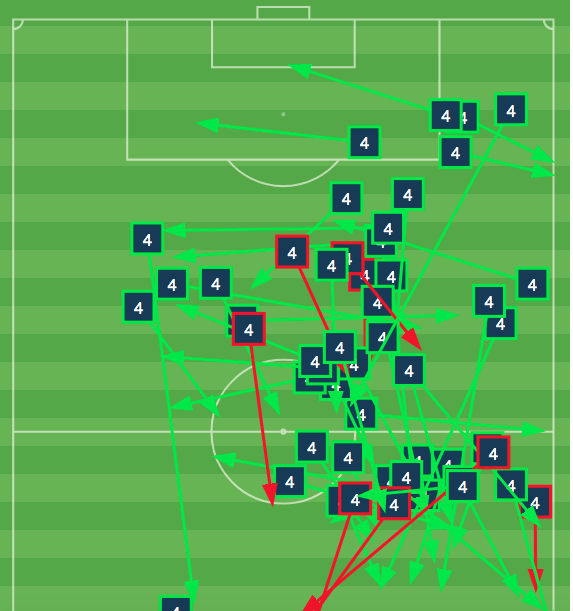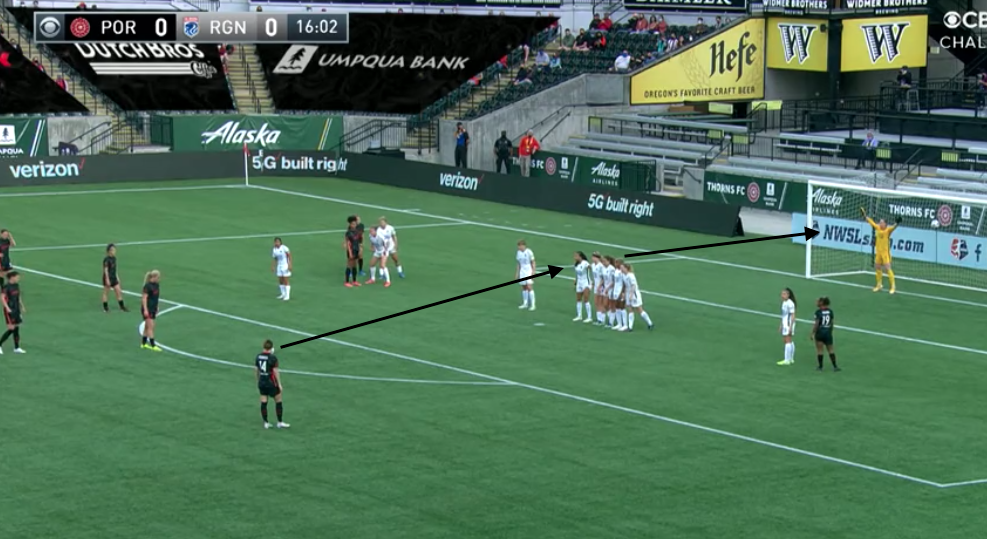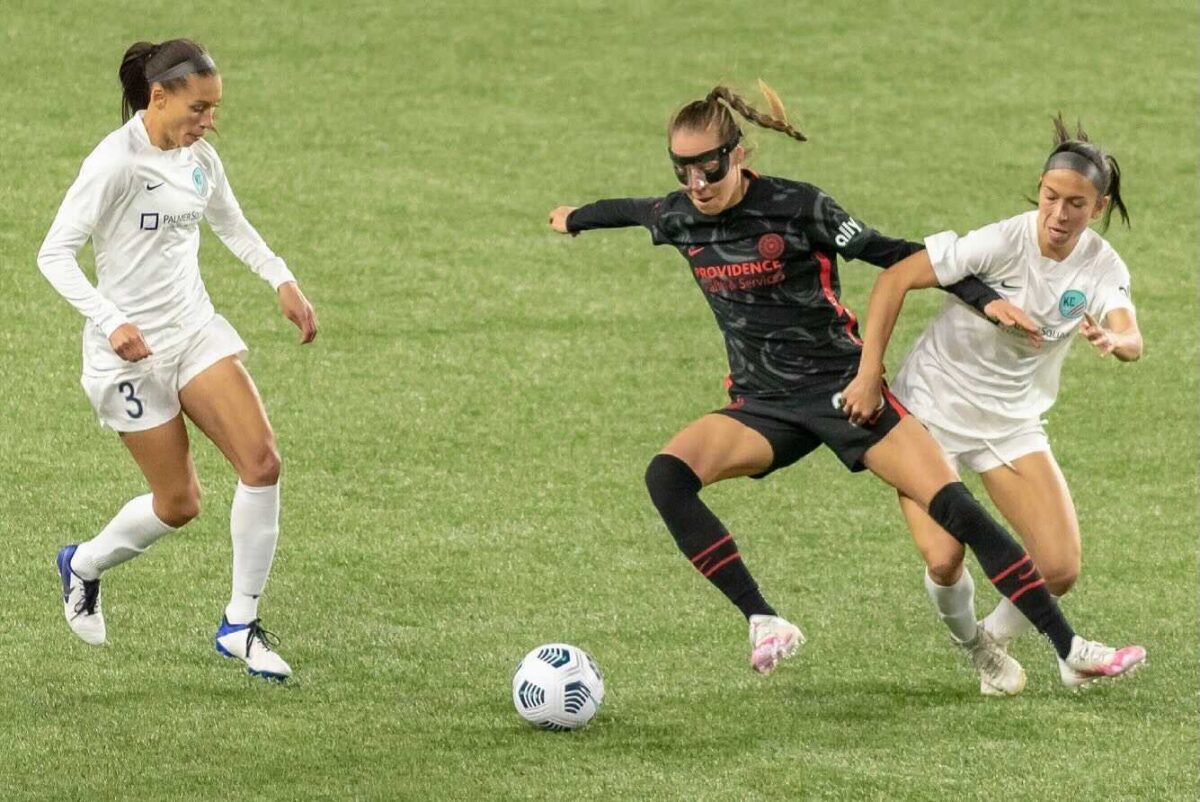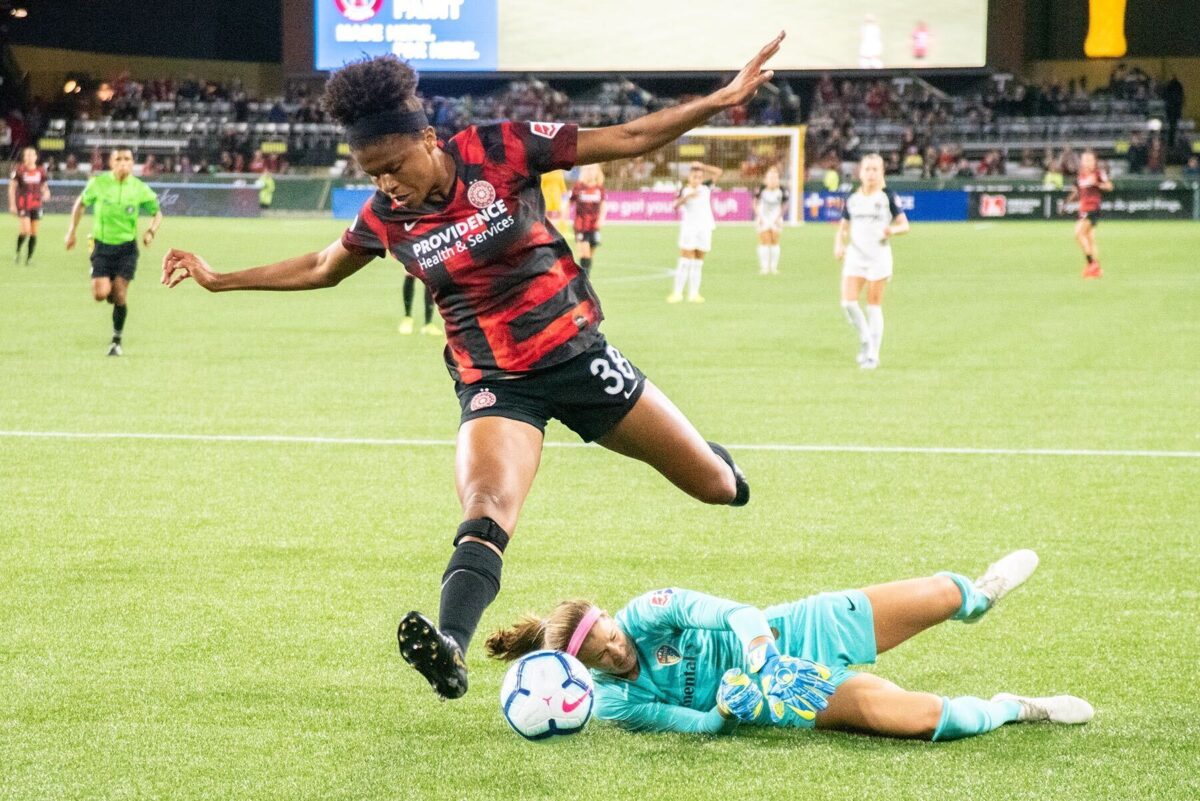The Thorns put together a convincing 1–0 win against Washington yesterday to close out the Olympic period seven points clear at the top of the table. Portland earned 16 of a possible 18 points since Christine Sinclair and the USWNT cohort left for Tokyo, only dropping one result in a draw against Gotham.
The game-winner, a sweet header that Simone Charley bounced in off the bottom of the crossbar, was assisted by a gorgeous cross from Olivia Moultrie, who is famously only 15 years old. Moultrie only played 45 minutes—Mark Parsons said after the game that the team is ramping up her minutes gradually—but it was her most impressive outing yet. In contrast to previous games, where many of her minutes have been in garbage time, here she helped set the tone playing a key position in what would turn out to be a calm, competent win.
The Thorns had a numerical advantage in the midfield, with four players there to the Spirit’s three, which Washington tried to neutralize a few ways. First, they were selective about which of the four they left unmarked. Most often this was Angela Salem, the deepest-lying midfielder (though occasionally Rodríguez and Salem would be swapped). Instead of marking her tightly, center forward Ashley Sanchez used careful positioning to cut Salem off as a passing option from the Thorns defense.
When Salem did get the ball, oftentimes Washington would actively drop away from her, preferring to get into a defensive shape rather than trying to win the ball or even force a particular pass. As a result, Salem had the most touches—about .75 per minute—she’s had in any of the last four games, as well as the most attempted passes and the second-highest passing accuracy, at 85.4%.
Leaving Salem largely alone meant players were always available to tightly guard Rocky Rodríguez, Celeste Boureille, and Moultrie, and accordingly, the Thorns found little joy playing through the middle. The Spirit were also selective in marking Meghan Klingenberg and Christen Westphal: they were allowed to send an aimless long ball up the flank, or pass back to the center backs, but were consistently blocked from more targeted forward passes. When they tried to link up with a midfielder, wingers Trinity Rodman or Ashley Hatch would close them down aggressively.
Finally, Washington defended pretty compactly, both horizontally and vertically. That often had the effect of encouraging hopeful long balls, and it also sometimes stretched the Thorns’ back line, as the Spirit would keep dropping as the center backs advanced, and Kling and Westphal pushed higher and higher into the space they were given:
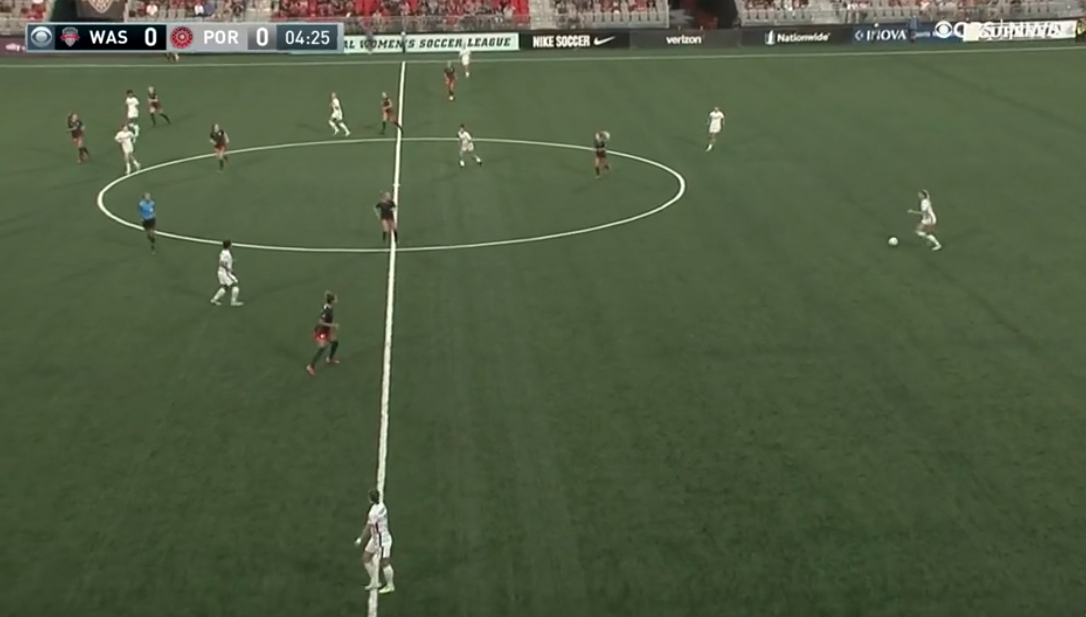
Portland’s defense isn’t egregiously out of shape here, but you can see both Kling and Westphal advancing up the wings, with Kelli Hubly being given few passing options. Five minutes after this, the Spirit came within inches of scoring—stopped only by Westphal’s heroic save off the line—after Menges took a hard touch and gave up the ball with the two outside backs in an even more attacking posture.
So, how did the Thorns manage to score? Moultrie’s impressive crossing ability aside, I would like to call attention to how she positioned herself on the play leading up to it. In the shot below, the problem Washington is about to have is quite clear: with left back Anna Heilferty tracking Simone Charley, Moultrie has a big ol’ space in front of her. Here Boureille has just passed to Emily Menges, who will find Moultrie as she runs into that space.
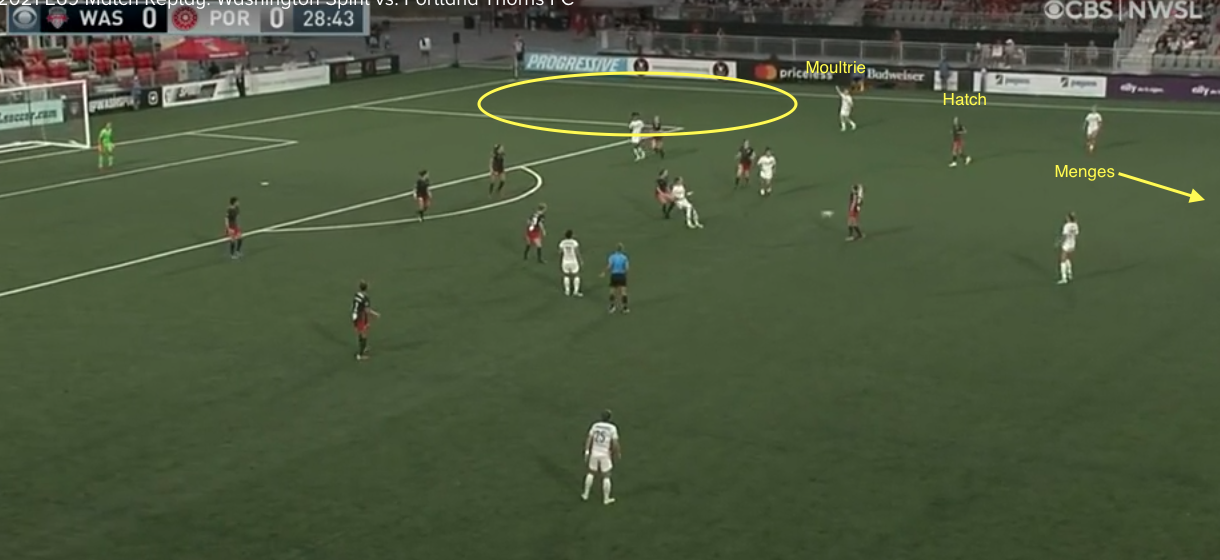
This was well read by the teen, who found a way to leverage the Spirit’s defensive strategy against them. While Moultrie was generally closely watched by Andi Sullivan while in that central pocket in front of the Spirit’s back line, here she’s figured out that if she drifts wide, the Washington midfield loses track of her, with Tori Huster, Dorian Bailey, and Sullivan worrying about Rodríguez, Boureille, and Salem, respectively.
Just after this screenshot, Hatch could tell what was about to happen—she pointed back toward Moultrie—but she seems to have been torn between dropping back to pick up Moultrie and continuing to watch Westphal, as she was asked to do throughout the game.
Charley also played a key role in setting this up, as she dragged Heilferty inside to open up that space on the right. This isn’t flashy stuff, just a well-worked play that found a weakness in Washington’s defensive setup.
Outside of the near miss in the first half, Portland also defended well, and Washington struggled to find many chances. Overall, this was the most decisive performance yet over the full 90 minutes by this junior Thorns team.

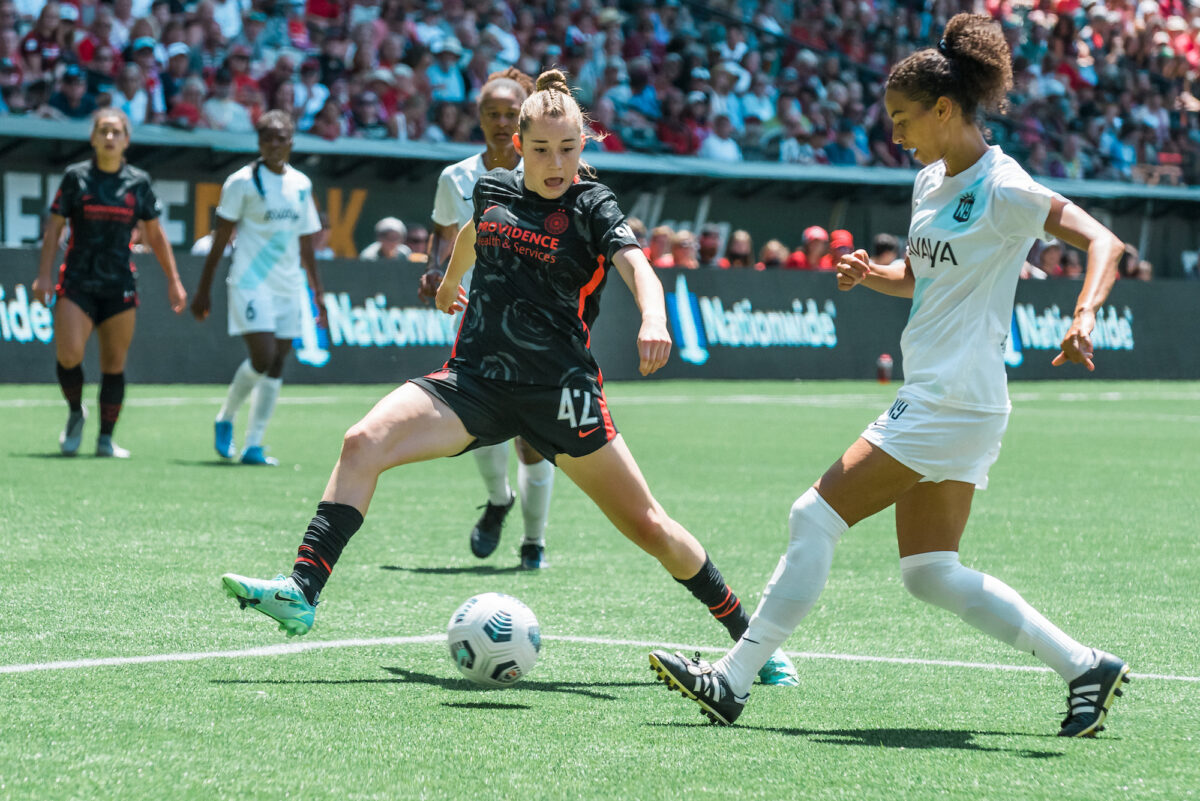
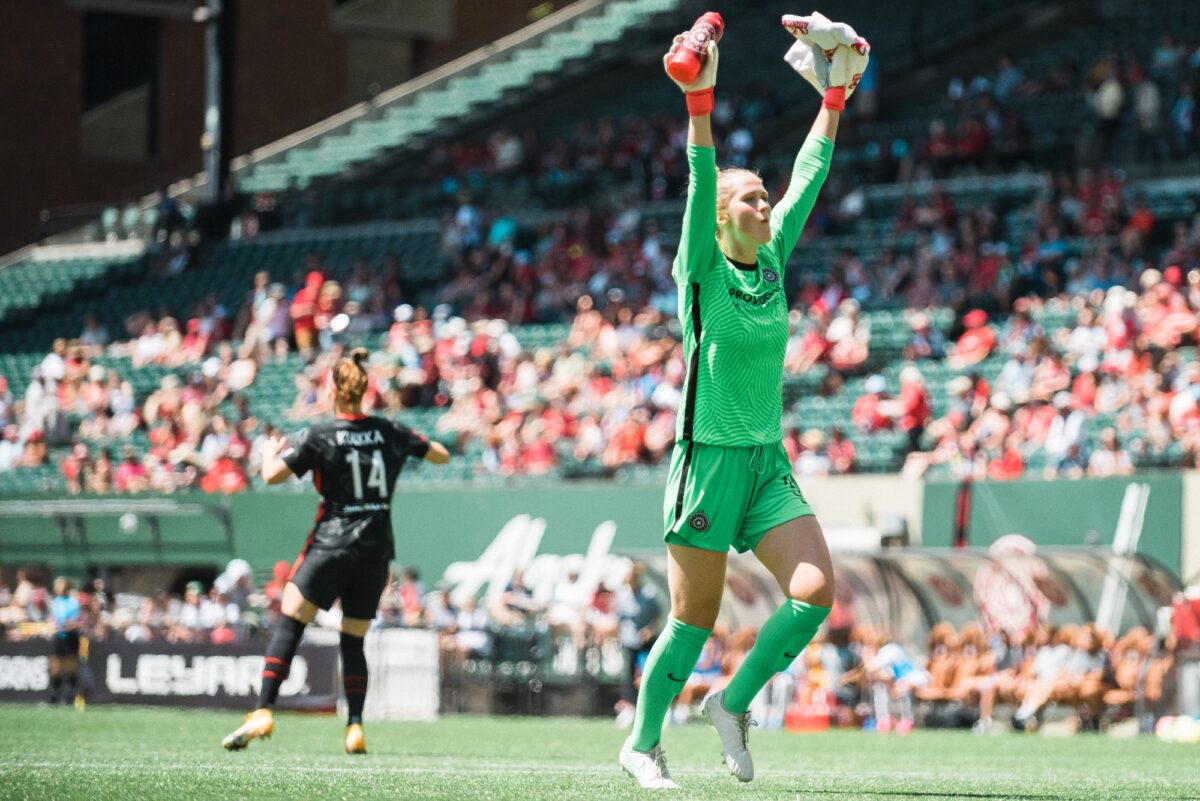



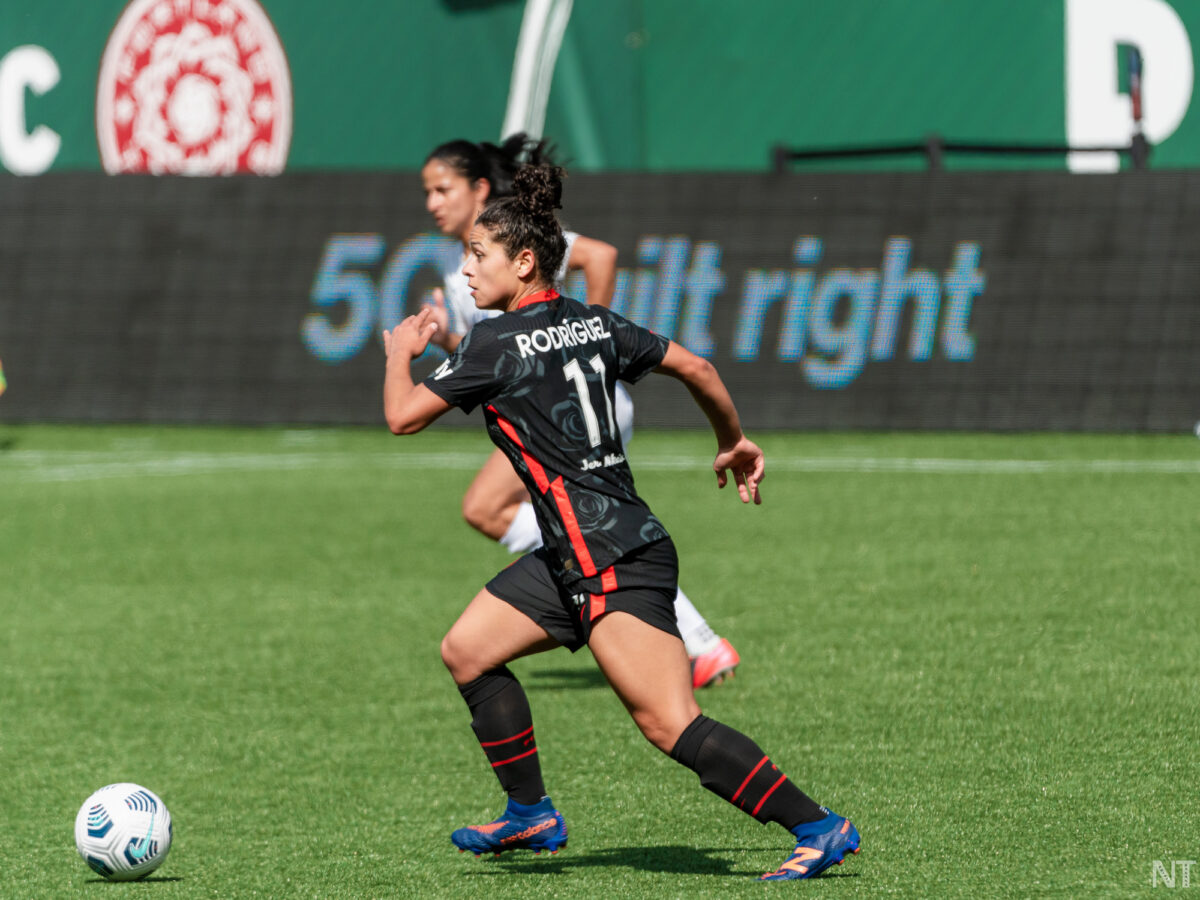
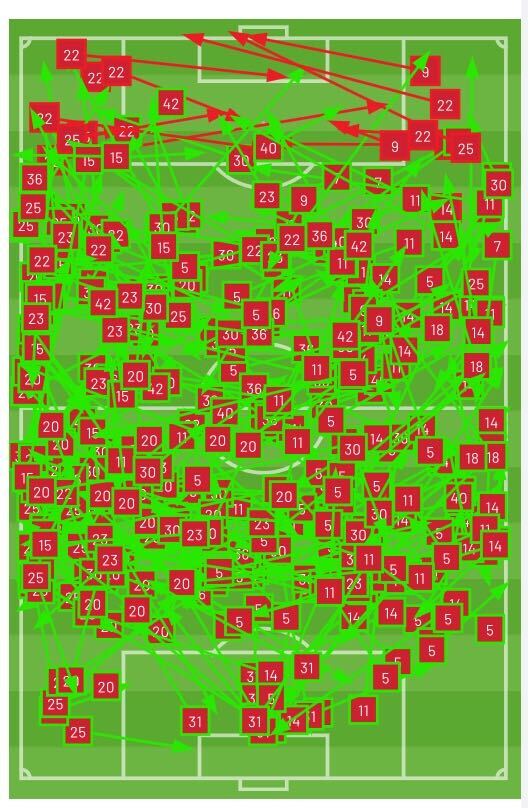
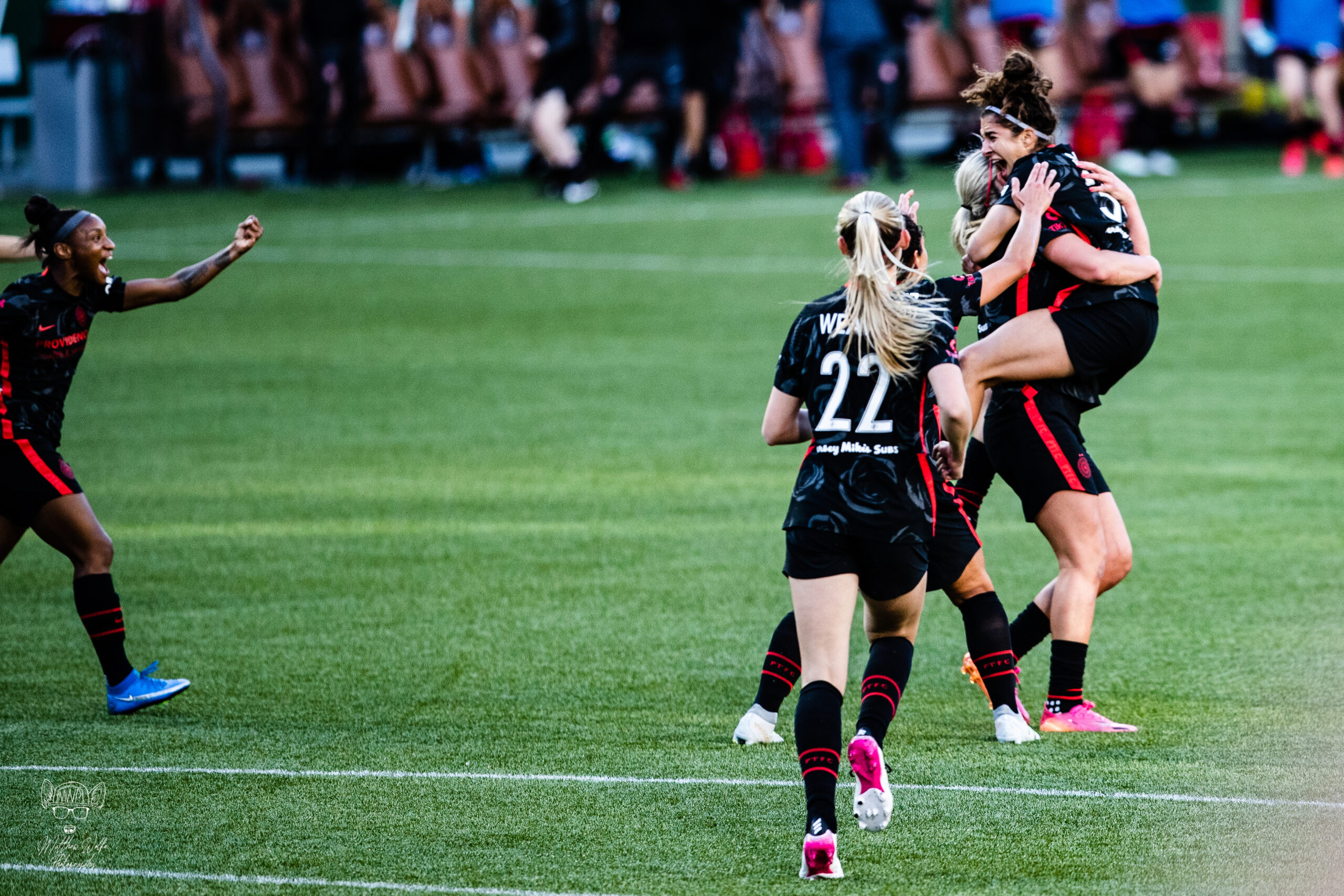
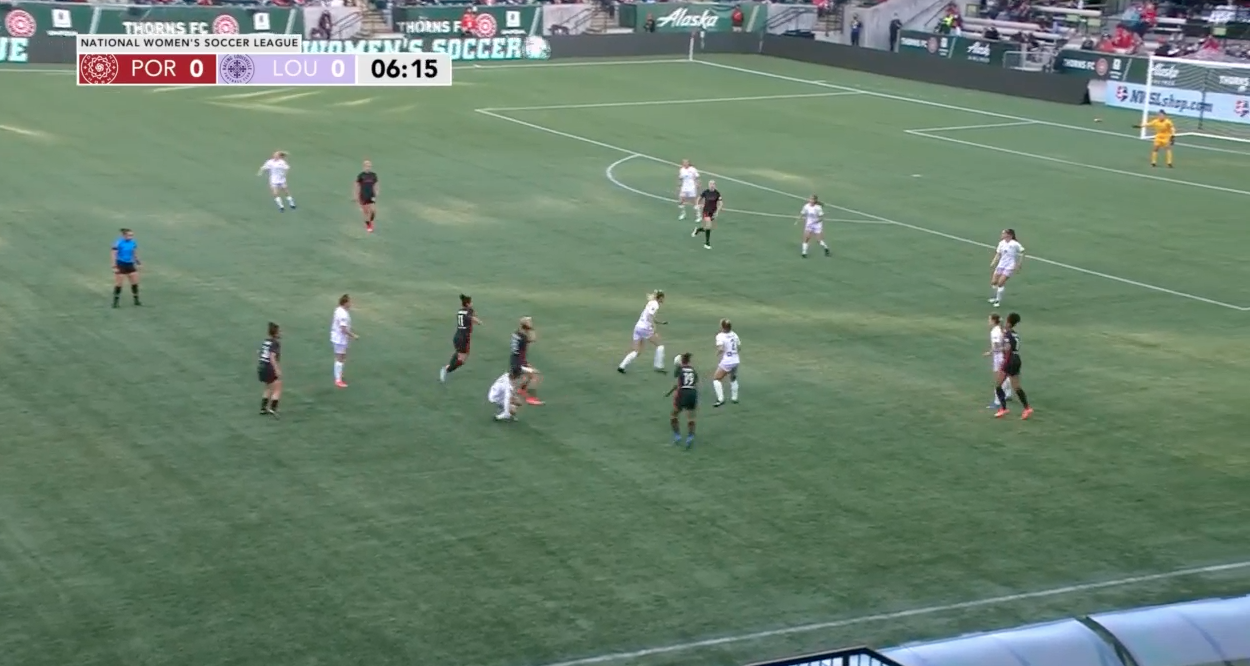
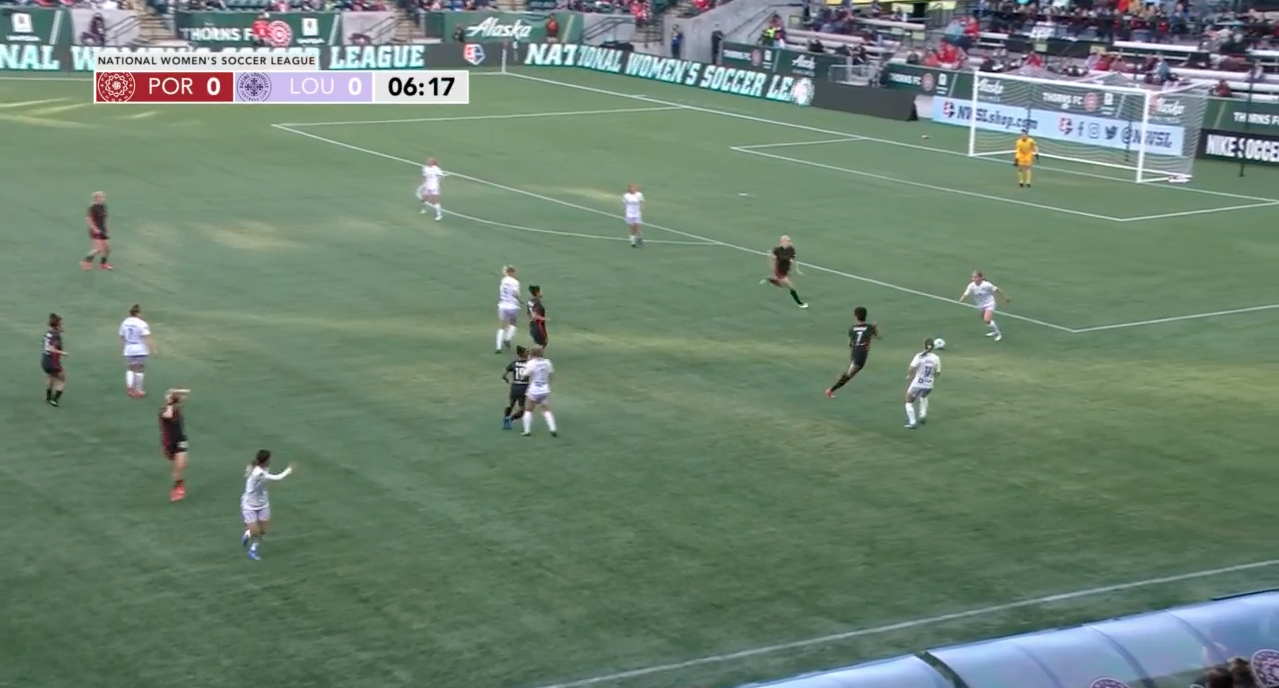
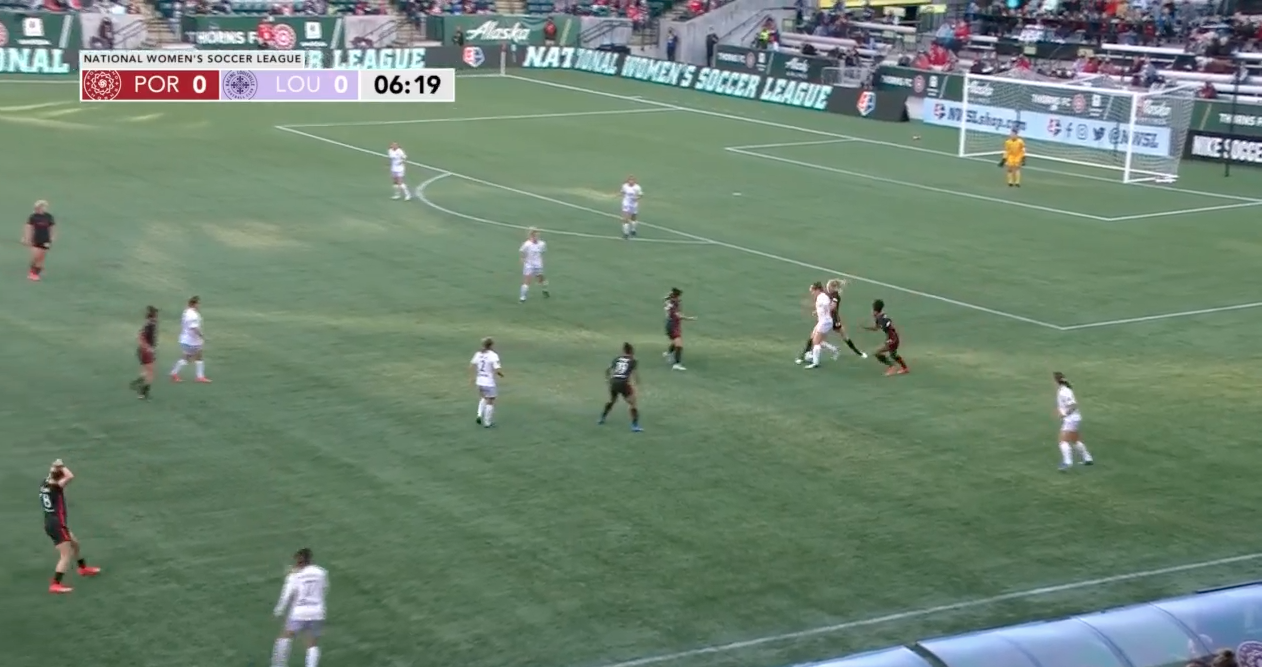



 Unlock with Patreon
Unlock with Patreon

